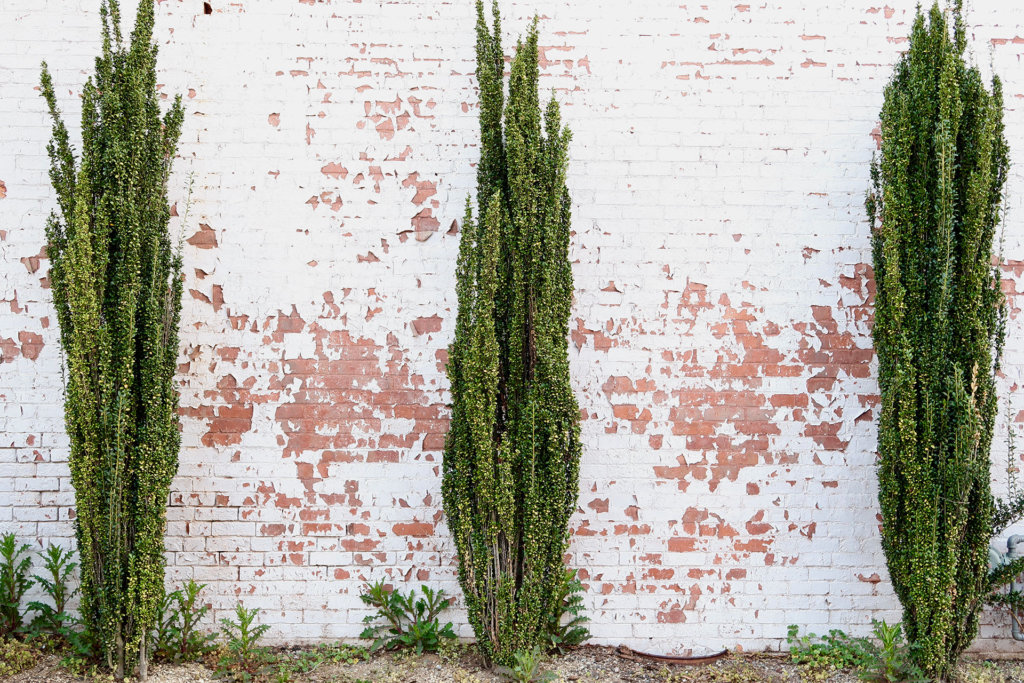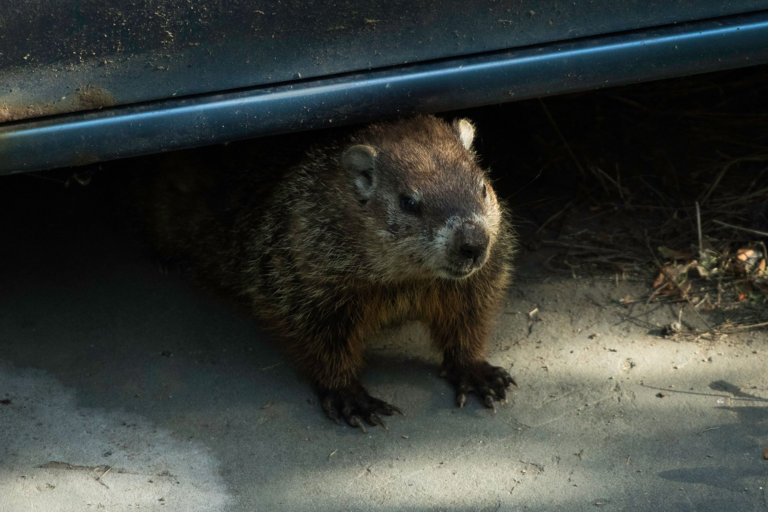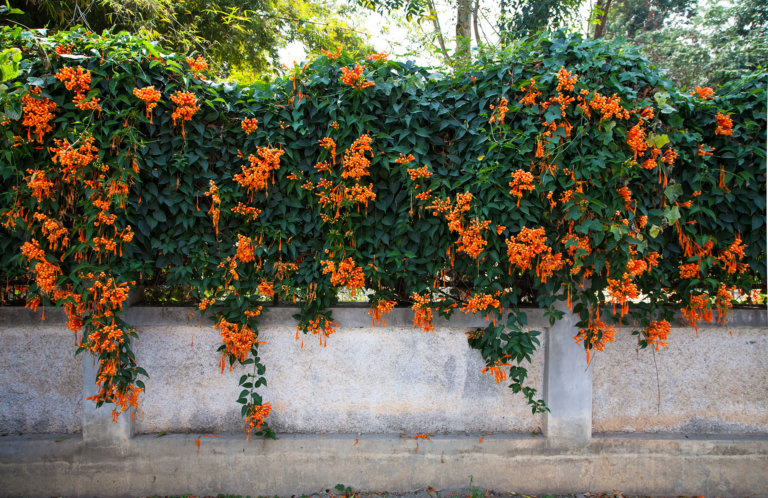Ilex Crenata, commonly known as Sky Pencil or Japanese Holly, is a tall, narrow, and evergreen holly often used in landscaping and small gardens. This versatile plant has tightly packed leaves, which makes it perfect for providing privacy as a hedge. A single Sky Pencil Holly is also an ideal focal plant for small gardens.
As you can guess from its name, this holly is native to Japan. If the climatic conditions are right, Sky Pencil Holly will grow quite effortlessly.
How to Grow Sky Pencil Holly
Ilex Crenata is a low-maintenance plant. They have thick leaves, which make them tolerant to a wide range of climate conditions. Find below the optimal conditions and a full care guide on how to grow Sky Pencil Holly. Most of the care will vary depending on the USDA hardiness zone where you live.
Light and Temperature
Sky Pencil Hollies are adapted to grow between USDA Plant Hardiness Zones 6 to 9. Many people manage to grow this shrub in zone 5; however, this will often depend on microclimates. You can check the USDA Plant Hardiness Zone map here if you are unsure in which category your zone falls.
This holly grows well under full sun. As an outdoor, garden plant, this is good news. If you live in an area with very bright sun, such as USDA hardiness zone 8 and higher, you may want to provide partial shade, especially during the noon.
If you live in USDA zone 6 or 7, full sun will be beneficial to promote growth. Sky Pencils in these zones can also tolerate partial shade; however, they will grow slower under such conditions. As a rule of thumb, if you can see the sky when you look up, without tree branches or other structures that significantly block the view, they will grow well, even without direct sun.
If you live quite up north, near zone 5, full sun is necessary. A south or west-facing side of the house is best as these directions receive long hours of sunshine. These hollies can tolerate temperate down to -20F if they are healthy and well established. If you live in Zone 5, it may be better to plant the holly in a container that you can move indoors during the bitter winter months.
Protect the Sky Pencil from any strong winds, especially if the temperatures are on the lower side. Also, if there is heavy snow, tie the branches to prevent them from splaying out horizontally.
Watering
A new Sky Pencil Holly requires frequent watering until the roots are well established. Make sure that the soil is just moist and not soggy. Soggy soil will increase the risk of rotting or fungal infections.
These plants only need watering during dry spells once they are established. The soil should be dry about one inch down before any watering. The recommendation is to use 5 gallons of water per week, equivalent to 1 inch of rainfall. If you live in a hot area, water slightly more frequently.
One way to tell if you are overwatering is to check the color of the leaves. The leaves should be dark green. If they seem lighter or pale, this may be a sign of overwatering. Lack of water results in the plant becoming brown.
Fertilizer
Normally the Sky Pencil Holly does not need fertilizing if you have planted it in fertile organic soil and have put some mulch around it. If you believe that your plant needs a bit of help, you can use an all-purpose, slow-release balanced fertilizer once a year, during spring. Water the plant thoroughly after applying the fertilizer.
There is no need for fertilizing during the first year of the life of your new holly. Don’t worry if you don’t see fast growth during the early years. Four to six inches of vertical growth per is standard for a well-established plant. Avoid using nitrogen-rich fertilizers that would force the plant to grow rapidly. Forced growth by fertilizers often are weak and makes the plant more susceptible to deceases.
Propagation
The most reliable method for propagation is from softwood or semi-hardwood cuttings. Softwood cuttings are taken in late spring. An ideal branch for cutting is new and soft. It has immature leaves at the tip and mature leaves at the base.
Once you cut the branch, remove the bottom leaves, and carefully scrape some of the bark from the base. Dip the bottom part of the branch in plant rooting hormones and then place it in a container with a mixture of soil and sand.
You should put around half of the length of the stem in the potting mix. Make sure that you press the soil thoroughly. Keep the nursery container moist and water frequently, not allowing the rooting medium to be fully dry.
The propagation from seed, which comes from the holly berry, is difficult, and the seed germination is very slow, up to three years. There is also a high risk of root rot from this method.
Pruning
Although this shrub retains its elegant form without pruning, some light trimming is often beneficial, especially when it is still young. The trimming helps the holly to gain stability and to have sturdier stems that will support the growth.
Winter is the best time for pruning as the plant is not actively growing. You can prune both the top and the sides. When trimming to control the height, do not cut more than a third of its growth. When pruning the sides, focus on the branches that are leaving out and pinch the tips off. This will eventually make the holly bushier.
Always make sure that the tools are sterilized as any contamination can cause infections. You can use a 10% bleach solution to clean the tools before you use them. Immediately after pruning, spray the stems with a designated fungicide.
How to Plant Sky Pencil Holly
Sky Pencil Holly is a terrestrial plant that grows best in acidic soil. The ideal pH is between 5 and 7. Good drainage and a base of organic matter are necessary for a healthy holly. Fall is the best season to plant a new shrub and to test the soil for acidity.
Single Plant on the Ground
Once you have chosen where to plant your new shrub, dig a hole approximately 6 inches tall and 12 inches wide. This should be enough to cover the root ball and allow extra space for the soil. Although this holly does not have excessive roots, do not plant it within five feet from anything important or from your home walls.
Use a wheelbarrow to prepare the mix needed during the planting. Prepare a mix with equal amounts of potting soil, peat moss, and mulch. If the soil is very rich in clay or sand, mix some compost. Place the new shrub in the hole and add the mix by pressing down the soil with your foot. Finish it with a layer of organic mulch around the roots zone and water well once planted.
As a Hedge
If you want to create a hedge, you should place the plants around two to three feet away from each other. Note that the Sky Pencil Holly grows slowly during the first few years, so if you are thinking of using them as a privacy screen, you will see the benefits in the years to come.
In a Container
Because this shrub does not have an invasive root system, it can be grown in containers. Use the same soil mix as described above. The diameter of the pot should be at least 12 inches. The plant should be fine in this first container for around three years. It can be later be moved to a bigger container, or it can be planted in the ground.
Common Problems
A common problem for Sky Pencil Holly growers is leaves turning yellow. Yellow leaves can often be a sign of pests or fungal infections, exposure to freezing temperatures, or iron deficiency.
Pests such as leaf miners, scales and spider mites, often cause problems for holly trees, including Sky Pencil Holly. Insecticides and horticultural oils are the best remedies for such infestations.
Fungal infections can cause various problems, such as tar spot or Botryosphaeria canker. Tar spot is characterized by small yellow spots on the leaves that eventually turn into holes. Botryosphaeria canker cuts through the stems and caused the tissue to die out, leading to the destruction of the stems. Removing the affected leaves and branches is necessary to save the plant. Neem oil is a good treatment that works as both fungicide and insecticide and is not dangerous for people and pets.
Fungal infections caused by Phytophthora and Pythium can affect the roots of the Sky Pencil Holly, causing them to turn black and eventually leading to the deterioration of the plant. Overwatering and poor drainage increases the risk of root rot.
Winter burn can happen if you live in cold areas or if you had a colder than usual winter. It causes the tips of the leaves to become discolored, and this discoloration moves down to the base of the stem. The key to helping a winter burnt holly is to keep the soil moist. Adding mulch around the base will help to retain moisture.
Iron deficiency, also known as iron chlorosis, is a result of overwatering or inadequate drainage. This often suffocates the roots, and as a result, the plant will struggle to get the iron from the soil. The leaves will turn yellow and often have dark green veins. In case you think you are watering correctly, it may be that the soil does not have enough iron, or the pH is too high. The best treatment is to use an iron-rich fertilizer during spring.
Foliage
The appearance of its foliage is one of the main reasons why this plant is so preferred for landscaping. The leaves are small and tightly packed, creating a dense texture. However, the surface does not seem leafless. The leaves are visible, and this creates a gives it a deeper texture.
Small greenish-white flowers are produced in late spring but are of no ornamental significance. In the fall, this holly may produce black pea-sized berries, but they are hidden in the foliage and not very visible.
The leaves cover the trunk from the ground, making the trunk invisible. The leaves have a dark green color, and the flowers and berries are not showy. These characteristics make it a very versatile ornamental plant.
Varieties
A shorter version of the Sky Pencil Holly is Ilex Crenata Hetzii. This species has an upright growing habit, like its related Sky Pencil Holly, but it grows only up to 6 feet tall. Its leaves are broader and glossy. They grow best between USDA Plant Hardiness Zone 5 and 8.
Ilex Crenata Helleri is another relative of the Sky Pencil Holly. This plant has an almost round shape with a maximum height of 3 feet and a width of 4 feet. It is considered to be a ‘dwarf’ version of Ilex Crenata Hetzii. The leaves are similar to those of the Ilex Crenata Hetzii. Due to their shape, they are great as foundation plants. The Golden Helleri is a golden-leaved variety of the above Helleri.
Landscaping Uses
And now the fun part! From giving a new life to your garden to adding some upmarket vibes to your entrance, this fantastic and unusual holly shrub is really fun to play around with.
Sky Pencil Hollies are great plants for landscaping, thanks to their elegant shape and texture. Their evergreen leaves attract interest all year round. This plant provides an excellent vertical shape that can serve as accent points in various corners at your house exterior, as a hedge, or as a single ornamental plant. With a full height of 10 feet, you are sure that no one can miss seeing it.
Many people use Sky Pencil Hollies to create a hedge as a privacy screen. This holly is especially useful when you have a narrow space between the side of the house and the external property line, and any other big bush would not allow enough space for you to walk there. By planting this tall but narrow bush, you can keep those curious eyes out of your house, without taking too much space.
However, you can also use a row of these hollies as a hedge in front of your house. However, this is less popular as other bushes have the advantage of growing faster, hence providing a faster function as a privacy screen. One or two statement Sky Pencil Hollies in the front of the house look amazing, especially if you want to frame the doorway or the driveway’s entrance.
The Sky Pencil has plenty of other functional uses on the front and sides of your house, such as hiding AC units or rain gutter downspouts. You can also use repetition to give life to a dull and continuous fence.
Apart from being functional plants, when it comes to garden design, the Sky Pencil Holly really stands out. Its relatively fine texture makes it stand out from other landscaping plants with less refined foliage.
We often just want a subtle blending of plants and flowers in our gardens, without thinking too much about creating a statement. Pair the Sky Pencil Holly with a statue, and this vertical accent will draw attention immediately to its immediate surroundings.
You can also use more than one holly in your garden by placing them in an oval or square-shaped arrangement. You can play with a number of them to create eye-catching symmetry and define small areas.
You can also plant Sky Pencil Hollies informally through beds. Its naturally full base and the evergreen leaves make it an excellent choice for plantings. They can serve as vertical markers in a group of plants. Flowers with intense colors will pop out even more if placed in front of a Sky Pencil Holly.
Frequently Asked Questions
Is Sky Pencil Holly toxic?
The leaves and berries have low toxicity, and these are frequently overstated. The toxic element is ilicin.
According to pawsdogdaycare.com, life-threatening intoxication of animals is very rare. As the taste of the berries and leaves is bitter, animals would not eat a large quantity.
The risk of intoxication is higher for children who may eat a large quantity if they find the berries attractive; however, no casualties are known.
How fast does sky holly grow?
In the first years of its life, the sky pencil holly grows around 4 inches per year. This holly has a relatively slow growth pace. Once it is well established, it grows about 6 inches per year.
Why is my holly turning brown?
If you just had a cold winter, brown leaves may be a sign of leaf scorch. The damage caused by freezing temperatures doesn’t usually show until when the worst is over. Fluid imbalances are created inside the plant as a result of frozen ground, wind, and bright sun. This creates dehydration, and the leaves start to turn brown from the tip inwards. You should make sure that you water regularly during the dry periods.
Brown leaves can also be a sign of a fungal infection. Botryosphaeria canker produces sunken areas on the stems, and this is accompanied by the plant turning brown. Eventually, the stems die out, and the removal of the problematic stems is recommended to slow the spread of the infection.
How long does a sky holly live?
The average lifespan of a Sky Pencil Holly is 40 years. When you plan your landscape, keep this in mind.







